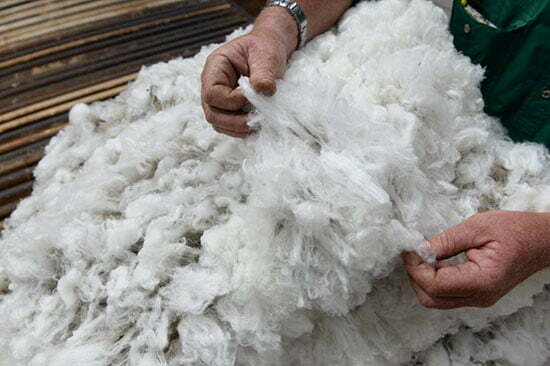
Wool is an organic fiber, which is soft and looks like curly hear, covering the bodies of domestic herbivorous animals such as goats and camels. As well as it protects the animals from rain, cold and physical conditions, the wool also meets clothing and spreading needs and other household needs of people. 9% of the fibers used in weaving and textile industry is wool.
Wool fiber is a kind of protein called keratin, and it stems from 5 and 12 pieces of thinner fibers coming off adjacently from the epiderm. There are sebaceous and sweat glands right at the bottom of wool fibers. There are 4000 – 10000 pieces of hear per square centimeter on the skin of a sheep. The number of fibers forming the hair depends on the species and body area of the sheep. On the skin of an adult merino sheep, there are 20 million – 126 million pieces of hair. The thinner the wool fibers are the curlier they become. A wool fiber carries approximately a load of 20 kilograms and it may stretch up to 30%. The view of a wool fiber under microscope looks scaly like a crocodile skin. It does not conduct electricity and heat. It is a good moisture barrier. When the wool is burnt, it emits ammonia gas, and the fire of wool dies immediately when the fire is gone. This feature also indicates that it is fire resistant.